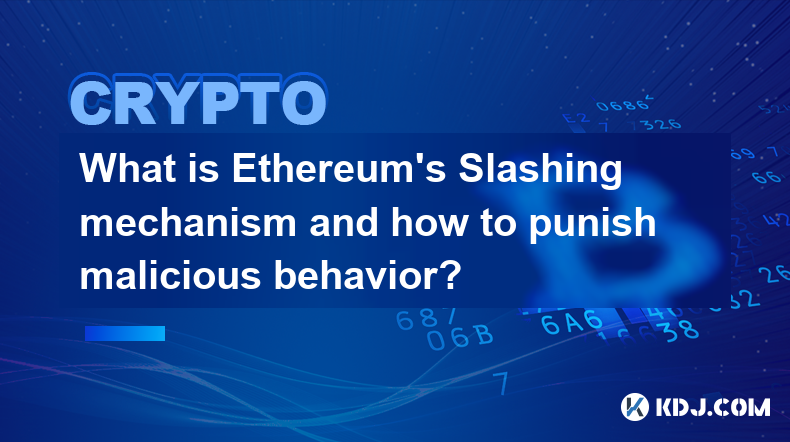-
 Bitcoin
Bitcoin $96,161.2493
-2.14% -
 Ethereum
Ethereum $2,686.5756
-2.45% -
 XRP
XRP $2.5719
-3.67% -
 Tether USDt
Tether USDt $0.9999
-0.04% -
 BNB
BNB $655.8976
-0.15% -
 Solana
Solana $171.9849
-2.65% -
 USDC
USDC $1.0001
0.00% -
 Dogecoin
Dogecoin $0.2435
-4.35% -
 Cardano
Cardano $0.7615
-4.97% -
 TRON
TRON $0.2379
-4.28% -
 Chainlink
Chainlink $17.4447
-5.17% -
 Avalanche
Avalanche $24.9624
-1.92% -
 Sui
Sui $3.3374
-3.85% -
 Stellar
Stellar $0.3266
-3.96% -
 Litecoin
Litecoin $127.2255
-5.17% -
 Toncoin
Toncoin $3.6609
1.73% -
 Shiba Inu
Shiba Inu $0.0...01526
-2.42% -
 UNUS SED LEO
UNUS SED LEO $9.7275
-0.32% -
 Hedera
Hedera $0.2145
-3.18% -
 Hyperliquid
Hyperliquid $24.2706
-2.62% -
 Polkadot
Polkadot $5.0883
0.29% -
 MANTRA
MANTRA $7.6370
0.37% -
 Bitcoin Cash
Bitcoin Cash $317.1514
-3.50% -
 Bitget Token
Bitget Token $5.0005
7.55% -
 Ethena USDe
Ethena USDe $0.9987
-0.10% -
 Dai
Dai $1.0000
-0.01% -
 Uniswap
Uniswap $8.8025
-5.45% -
 Monero
Monero $233.1225
-0.50% -
 NEAR Protocol
NEAR Protocol $3.4727
-2.15% -
 Pepe
Pepe $0.0...09302
-4.88%
How are Ethereum’s decentralized applications (DApps) built?
DApps, built on Ethereum's decentralized blockchain, empower users with secure, transparent, and autonomous applications that eliminate intermediaries and redefine digital interactions.
Feb 19, 2025 at 04:01 pm

Key Points:
- Defining decentralized applications (DApps)
- Understanding the Ethereum blockchain as a platform for DApps
- Exploring the building blocks of DApps on Ethereum: smart contracts, Ethereum Virtual Machine (EVM), and distributed ledger technology (DLT)
- Identifying the key components of DApp architecture: user interface, back-end logic, and blockchain integration
- Examining the process of creating and deploying DApps on Ethereum
Building Decentralized Applications (DApps) on Ethereum
1. Overview of Decentralized Applications (DApps)
DApps, short for decentralized applications, emerge as transformative software solutions redefining the digital landscape. Unlike traditional applications, DApps operate on a decentralized network, distributing control and eliminating the need for intermediaries. This decentralized architecture empowers DApps with enhanced security, transparency, and autonomy.
2. Ethereum: A Platform for DApp Development
Ethereum stands as a prominent platform for DApp development, owing to its robust blockchain technology and extensive ecosystem. The Ethereum blockchain provides a secure and reliable foundation for DApps, enabling developers to leverage its inherent features such as smart contracts, distributed ledger technology, and the Ethereum Virtual Machine (EVM).
3. Building Blocks of DApps on Ethereum
Smart Contracts:
Smart contracts constitute the cornerstone of DApps, acting as self-executing agreements residing on the blockchain. Coded with pre-defined business logic, smart contracts automate tasks, enforce rules, and facilitate transactions without the necessity for intermediaries or external enforcement mechanisms. Their immutability and transparency ensure that the terms of the contract are upheld precisely as intended.
Ethereum Virtual Machine (EVM):
The EVM serves as a runtime environment within the Ethereum blockchain, providing a platform for executing smart contracts. This virtual machine interprets and executes the bytecode of smart contracts, ensuring that they adhere to the rules and protocols established by the Ethereum network.
Distributed Ledger Technology (DLT):
DLT underpins the decentralized nature of DApps. It maintains a shared, immutable ledger that records all transactions and data associated with the DApp. Each node on the network possesses a copy of this ledger, guaranteeing the integrity and transparency of the DApp's operations.
4. DApp Architecture: Key Components
User Interface:
The user interface (UI) forms the front-end of a DApp, providing a seamless and intuitive experience for users. Developers leverage various UI frameworks and tools to design responsive and user-friendly interfaces that enable efficient interaction with the DApp's functionalities.
Back-End Logic:
The back-end logic encompasses the core functionality of the DApp, including smart contract deployment and interaction. Developers employ programming languages such as Solidity to develop smart contracts that define the business logic and interact with the blockchain.
Blockchain Integration:
Blockchain integration enables DApps to leverage the Ethereum blockchain's capabilities. Through designated Application Programming Interfaces (APIs) and libraries, DApps can securely connect to the blockchain, interact with smart contracts, and access blockchain data in a reliable and efficient manner.
5. Process of Creating and Deploying DApps on Ethereum
Creating a DApp:
a. Define the DApp's purpose and requirements
b. Design the smart contracts that will govern the DApp's logic
c. Develop the user interface for interacting with the DApp
Deploying a DApp:
a. Compile the smart contracts into bytecode
b. Deploy the smart contracts to the Ethereum blockchain
c. Make the DApp accessible to users through a web interface or mobile application
FAQs:
Q: What are the advantages of building DApps on Ethereum?
A: Building DApps on Ethereum offers numerous advantages, including enhanced security, transparency, immutability, autonomy, and cost efficiency.
Q: What is the role of smart contracts in DApps?
A: Smart contracts are self-executing agreements that automate tasks, enforce rules, and facilitate transactions within DApps, ensuring reliability and transparency.
Q: How does the Ethereum Virtual Machine (EVM) contribute to DApp development?
A: The EVM serves as the runtime environment for executing smart contracts on the Ethereum blockchain, providing a secure and consistent platform for DApp execution.
Q: What are the key components of DApp architecture?
A: DApp architecture typically comprises a user interface, back-end logic, and blockchain integration, enabling seamless user interaction, core functionality, and secure blockchain connectivity.
Q: What are the steps involved in creating and deploying DApps on Ethereum?
A: Creating and deploying DApps on Ethereum involves defining the DApp's purpose, designing smart contracts, developing the user interface, compiling smart contracts into bytecode, deploying smart contracts, and making the DApp accessible to users.
Disclaimer:info@kdj.com
The information provided is not trading advice. kdj.com does not assume any responsibility for any investments made based on the information provided in this article. Cryptocurrencies are highly volatile and it is highly recommended that you invest with caution after thorough research!
If you believe that the content used on this website infringes your copyright, please contact us immediately (info@kdj.com) and we will delete it promptly.
- 5 Best Cryptos to Buy Today: BTFD Coin, Dogecoin, Goatseus Maximus, Baby Doge Coin, Pudgy Penguins
- 2025-02-22 16:30:25
- New IP-Focused Altcoin Surges 164% in First Week Amid Launch of Research Collaboration With Stanford University
- 2025-02-22 16:30:25
- Top Crypto Projects to Invest in February 2025: Qubetics, Render, Solana, and XRP
- 2025-02-22 16:30:25
- Discover the Future of Digital Currency: Insights into SEI, EOS, and the Revolutionary Qubetics
- 2025-02-22 16:30:25
- Bybit Hit By Colossal $1.46 Billion Hack, Biggest Crypto Theft In History
- 2025-02-22 16:30:25
- BTFD Coin: The Ultimate Play for Smart Investors
- 2025-02-22 16:30:25
Related knowledge

What is Ethereum’s Slashing mechanism and how to punish malicious behavior?
Feb 20,2025 at 03:08am
Key PointsOverview of slashingDifferent types of slashing in EthereumIncentives and consequences of slashingIdentifying and reporting slashed validatorsOngoing discussions and potential improvementsEthereum's Slashing Mechanism: Punishing Malicious BehaviorEthereum's slashing mechanism is an essential tool for ensuring network security and punishing mal...

What is the verifier node of Ethereum and how to become a verifier?
Feb 19,2025 at 06:00pm
The Verifier Node of Ethereum: A Comprehensive GuideKey Points:What is a Verifier Node?How to Become a Verifier NodeResponsibilities and Rewards of a Verifier NodeMinimum Requirements for Becoming a Verifier NodePotential Difficulties in Running a Verifier Node1. What is a Verifier Node?A Verifier Node is an independent entity on the Ethereum network th...

What is Ethereum’s staking, and how to participate and earn money?
Feb 19,2025 at 04:37pm
Key Points:Understanding Ethereum's Staking MechanismSteps to Participate in StakingBenefits and Rewards of StakingSecurity and Risk ConsiderationsTechnical Requirements and Hardware OptionsPotential Challenges and Troubleshooting TipsFAQs on Ethereum StakingWhat is Ethereum's Staking?Proof-of-Stake (PoS) is a consensus mechanism used in blockchain netw...

What is Ethereum’s DAO (Decentralized Autonomous Organization) and how does it work?
Feb 20,2025 at 03:12am
Key PointsDefinition and Structure of a DAOGovernance and Decision-Making in DAOsBenefits and Use Cases of DAOsChallenges and Limitations of DAOsWhat is Ethereum's DAO (Decentralized Autonomous Organization) and How Does It Work?Definition and Structure of a DAOA Decentralized Autonomous Organization (DAO) is an innovative governance and management fram...

What is Ethereum's multi-signature wallet and how to improve security?
Feb 20,2025 at 02:18pm
Key Points:Understanding the Concept of a Multi-Signature WalletBenefits and Drawbacks of Multisig WalletsRequirements for Setting Up a Multisig WalletStep-by-Step Guide to Generating a Multisig WalletImplementing Strategies for Enhanced Security1. Understanding the Concept of a Multi-Signature WalletA multi-signature (multisig) wallet in the Ethereum e...

What is Ethereum's oracle and how to provide data for smart contracts?
Feb 21,2025 at 01:30am
Key Points:Understanding the concept of oracles in EthereumExploring different types of oraclesDetailed guide on how to provide data for smart contractsAddressing potential challenges and considerationsWhat is Ethereum's Oracle?Oracles are crucial components in the Ethereum ecosystem, enabling smart contracts to access real-world data and off-chain even...

What is Ethereum’s Slashing mechanism and how to punish malicious behavior?
Feb 20,2025 at 03:08am
Key PointsOverview of slashingDifferent types of slashing in EthereumIncentives and consequences of slashingIdentifying and reporting slashed validatorsOngoing discussions and potential improvementsEthereum's Slashing Mechanism: Punishing Malicious BehaviorEthereum's slashing mechanism is an essential tool for ensuring network security and punishing mal...

What is the verifier node of Ethereum and how to become a verifier?
Feb 19,2025 at 06:00pm
The Verifier Node of Ethereum: A Comprehensive GuideKey Points:What is a Verifier Node?How to Become a Verifier NodeResponsibilities and Rewards of a Verifier NodeMinimum Requirements for Becoming a Verifier NodePotential Difficulties in Running a Verifier Node1. What is a Verifier Node?A Verifier Node is an independent entity on the Ethereum network th...

What is Ethereum’s staking, and how to participate and earn money?
Feb 19,2025 at 04:37pm
Key Points:Understanding Ethereum's Staking MechanismSteps to Participate in StakingBenefits and Rewards of StakingSecurity and Risk ConsiderationsTechnical Requirements and Hardware OptionsPotential Challenges and Troubleshooting TipsFAQs on Ethereum StakingWhat is Ethereum's Staking?Proof-of-Stake (PoS) is a consensus mechanism used in blockchain netw...

What is Ethereum’s DAO (Decentralized Autonomous Organization) and how does it work?
Feb 20,2025 at 03:12am
Key PointsDefinition and Structure of a DAOGovernance and Decision-Making in DAOsBenefits and Use Cases of DAOsChallenges and Limitations of DAOsWhat is Ethereum's DAO (Decentralized Autonomous Organization) and How Does It Work?Definition and Structure of a DAOA Decentralized Autonomous Organization (DAO) is an innovative governance and management fram...

What is Ethereum's multi-signature wallet and how to improve security?
Feb 20,2025 at 02:18pm
Key Points:Understanding the Concept of a Multi-Signature WalletBenefits and Drawbacks of Multisig WalletsRequirements for Setting Up a Multisig WalletStep-by-Step Guide to Generating a Multisig WalletImplementing Strategies for Enhanced Security1. Understanding the Concept of a Multi-Signature WalletA multi-signature (multisig) wallet in the Ethereum e...

What is Ethereum's oracle and how to provide data for smart contracts?
Feb 21,2025 at 01:30am
Key Points:Understanding the concept of oracles in EthereumExploring different types of oraclesDetailed guide on how to provide data for smart contractsAddressing potential challenges and considerationsWhat is Ethereum's Oracle?Oracles are crucial components in the Ethereum ecosystem, enabling smart contracts to access real-world data and off-chain even...
See all articles














![BONK The Meme Coin MORE THAN ORDINARY [DOG] on Solana BONK The Meme Coin MORE THAN ORDINARY [DOG] on Solana](/uploads/2025/02/22/cryptocurrencies-news/videos/bonk-meme-coin-ordinary-dog-solana/image-1.jpg)


































































